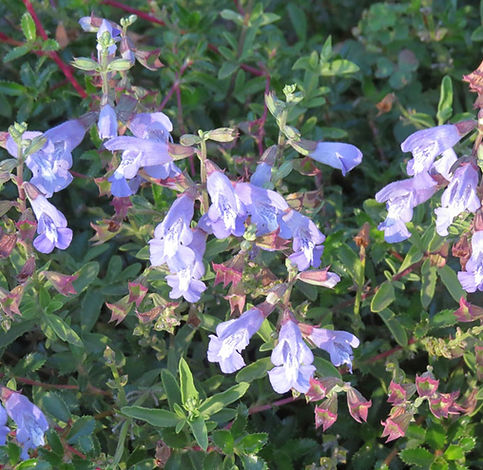

Salvia muirii
Water Needs
low

Shrub small
Wild Sage
30 - 40 cm
Size
Light Conditions
sun
Frost
tender
Flowers
blue December to March; spring summer
Garden Situation
rockery; container; sun; sandy soils; wildlife bees
Habitat
hot dry; fynbos
Region
western cape
Rain Season
winter
Find informative indigenous gardening articles in our web magazine - www.theindigenousgardener.co.za
Description
The Wild Sage is an almost perfect plant for the Cape garden - neat, small, evergreen, gorgeous blue flowers, long flowering season, easy to grow, fragrant, long-lived, drought hardy, pest resistant – what more could you ask for? One of the best performing artists of the summer Cape garden, the small size of the Wild Sage is one of the most attractive of this hardy family. Description: Salvia muirii is a small subshrub growing to 30 cm high in its natural environment, but often taller in cultivation. Typical of the fynbos species it has a woody stem and underground rootstock from which new growth sprouts after a fire. Oval leaves are grey-green, fairly thick and leathery to the touch, with a slight fragrance of menthol and eucalyptus when crushed. Bi-coloured flowers, usually lavender blue with a central white patch on the lower lip, cover the bush from December to March. Flowering is prolific in ideal conditions, being full sun and well-drained soils. The dark red calyces stay on the stem as the flower falls off. Older plants can develop a loose growth habit; simply pinch out growing tips, or give a light prune after flowering to retain a compact form. Flowers are popular with bees. Its small size makes the Wild Sage a perfect fit for small gardens, rockery, or as a container plant for a sunny patio – imagine a Christmas dinner outdoors surrounded by pots of lavender blue and snowdrop white. Propagation is via seed, layering, and from semi-hardwood cuttings taken in spring and summer. Kirstenbosch Botanic Gardens cultivates a dark blue variety. Despite being easy to cultivate, wild populations are restricted to the dry fynbos regions of the Western Cape, growing on sandy soils.
